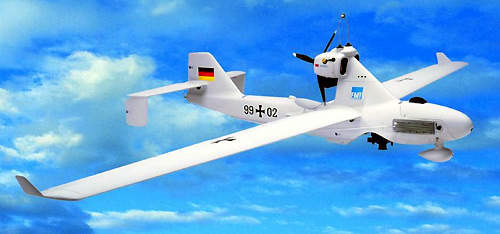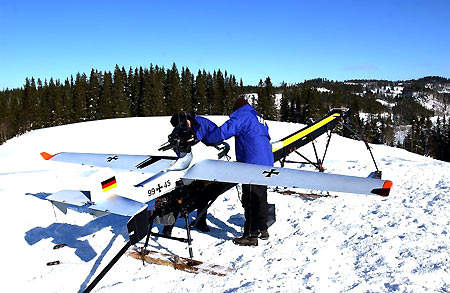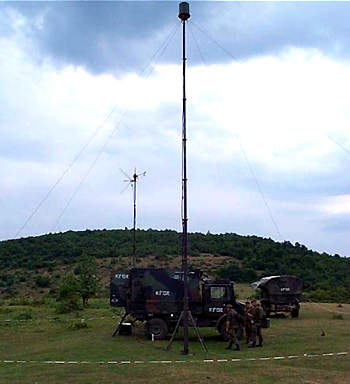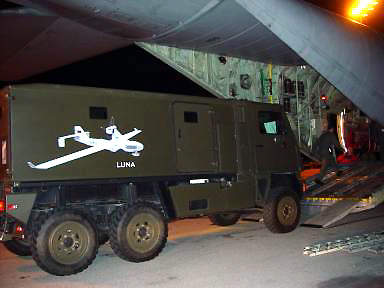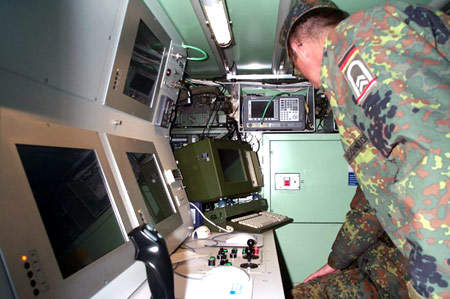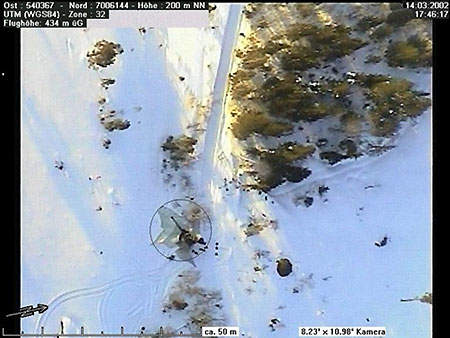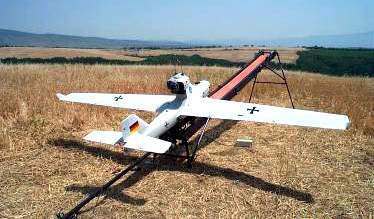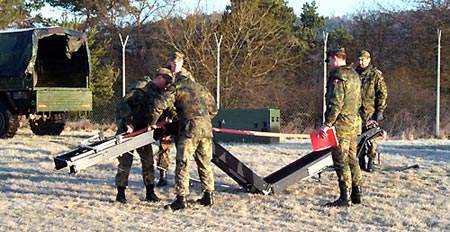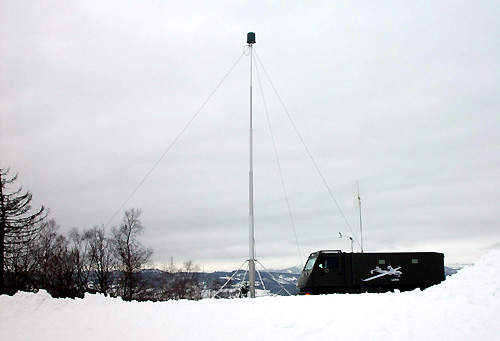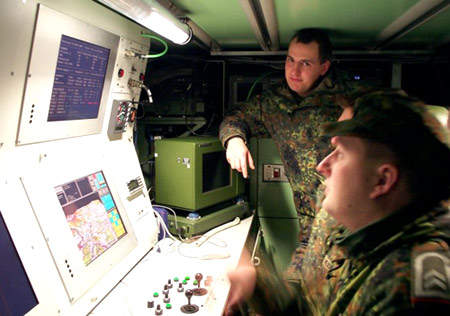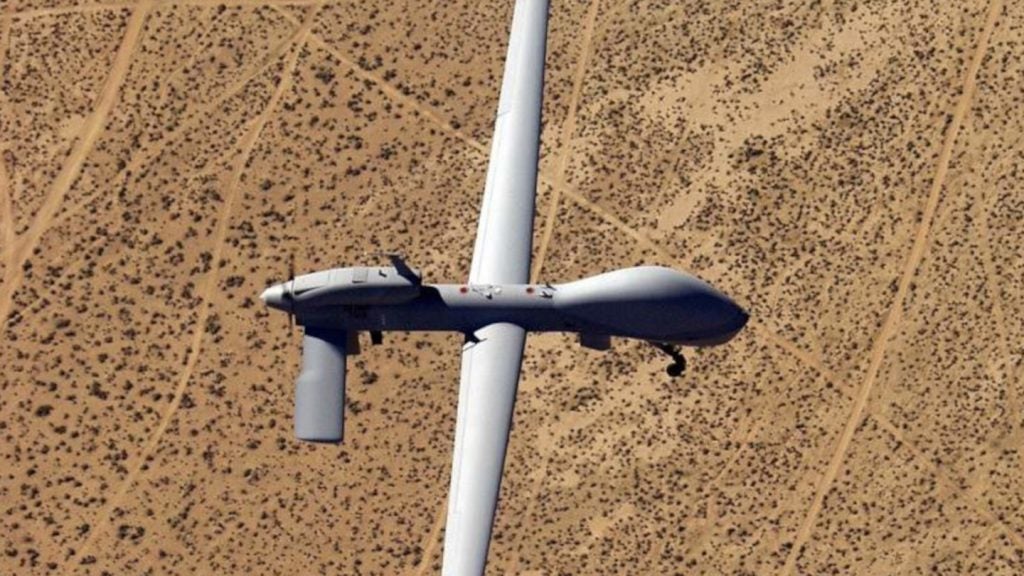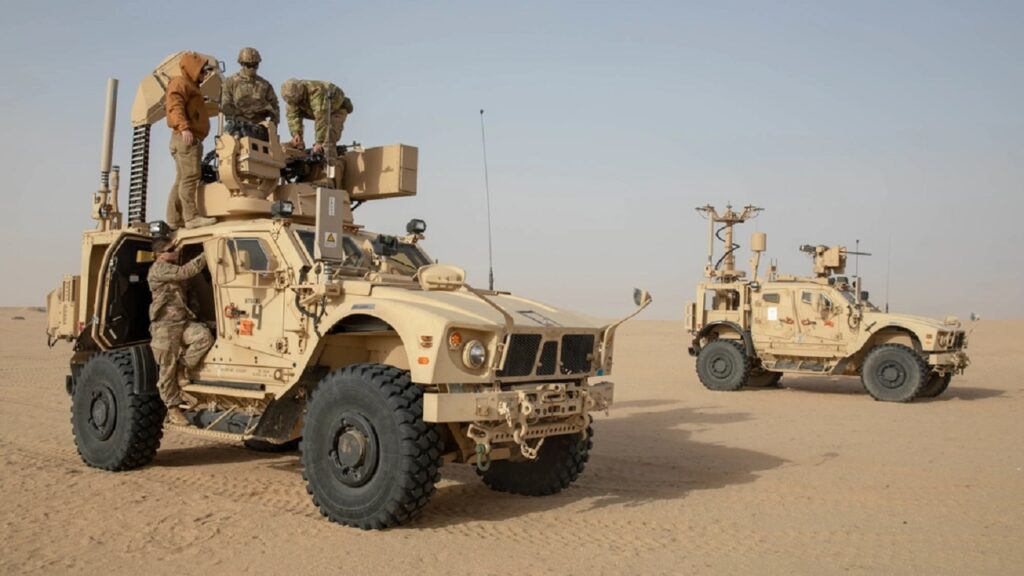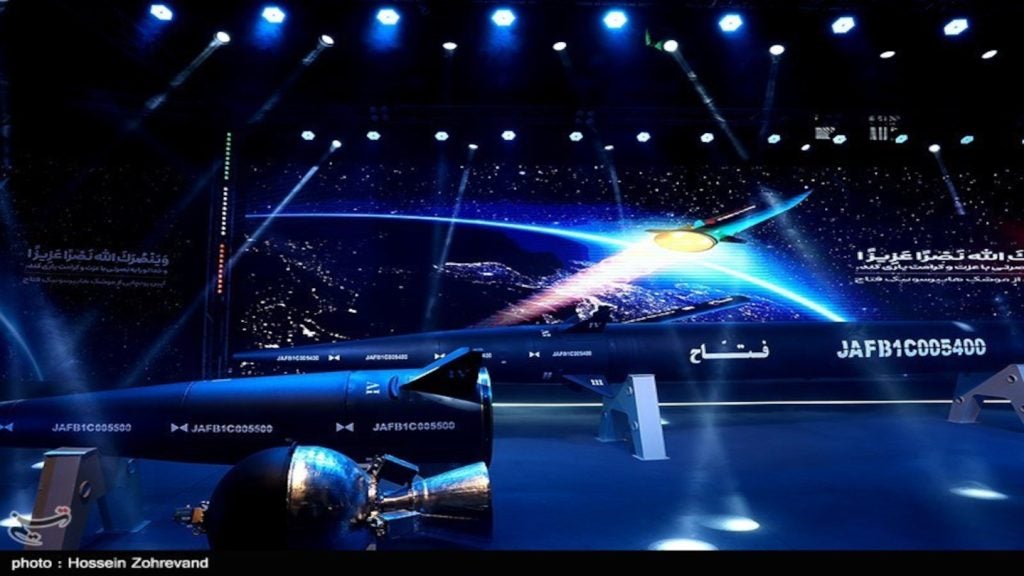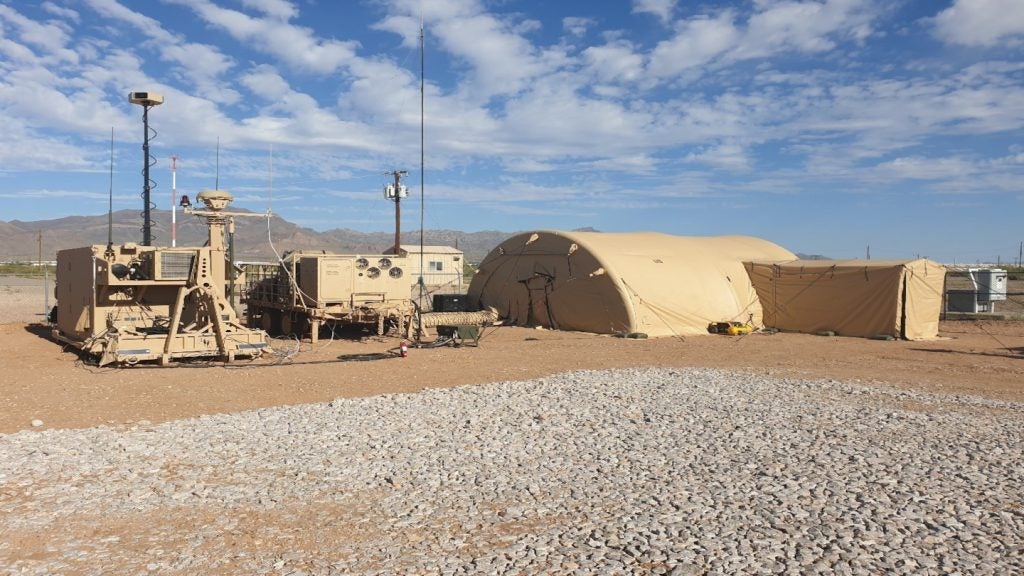LUNA is a lightweight medium range reconnaissance and surveillance UAV system which has been in service with the German Army since March 2000. It has performed over 1,000 mission flights and has been successfully deployed in Kosovo, Macedonia and Afghanistan. The LUNA (Luftgestützte Unbemannte Nahaufklärungs Ausstattung) airborne unmanned close reconnaissance system is manufactured by EMT based in Penzberg, Germany.
In 1999, after a two-year development phase, the LUNA system received its military flight certification and one system with two ground control stations and ten air vehicles was ordered by the German Ministry of Defence. The performance in terms of quality of imagery, ease of use and reliability has resulted in the placement of further orders for the German Army.
LUNA UAV deployment
LUNA UAV systems have been in operation with the German Army in support of the NATO KFOR forces in Prizren, Kosovo, in the Amber Fox peace keeping operations in the Balkans, and with the International Security Assistance Force in Afghanistan.
The system has been successfully proven in harsh environmental conditions, including fine airborne sand, wind, wide temperature changes, high altitude and low air density.
The system was ordered for deployment in Iraq for weapons inspection operations by the United Nations. The system was en route to Iraq when a state of war was declared and the system was not delivered.
LUNA was deployed in Operation Strong Resolve in Norway in 2002. The complete system was transported from Germany to Norway on a single C130 aircraft.
EMT secured an order from the German Armed Forces in July 2009 for four additional LUNA systems.
The tactical UAS was deployed by the German Provincial Reconstruction Team (PRT) in January 2013 and was readied for operations in the province of Kunduz (Afghanistan) in February 2013.
LUNA unmanned aerial vehicle operation
LUNA is operated by a crew of two operators with a launch and recovery team of two, and is transported by small road vehicle or aircraft. A typical system includes ten air vehicles, two catapult launchers and two vehicle mounted ground control stations (GCS). In the German Army system, the ground control station is mounted either in a shelter on a light truck or integrated in a 4×4 Wolf jeep. A DURO 6×6 armoured all-terrain vehicle has been used as a GCS for the NATO winter exercise in Norway.
The reconnaissance and surveillance flight and mission plan can be preprogramed into the air vehicle prior to launch, and can be altered during flight.
The launch is by a 6m rail, lightweight bungee catapult which is folded for transportation. The time between reaching a launch site to the first launch is less than 30min. Air vehicle recovery and relaunch takes less than 15min and involves installing the reusable parachute pack and exchanging the reusable fuel cartridge.
The microwave tracking communication link transmits image and systems data in real-time from the airborne vehicle to the ground station. The flight is monitored and controlled from the virtual cockpit.
Recovery is by parachute. The descent speed is 4m/sec. Impact dampers on the airframe protect against touchdown damage. As an alternative in mine infested or in mountainous terrain, aircraft recovery is by flying the air vehicle into a recovery net.
LUNA air vehicle
The air vehicle is very small, with a wing span of 4.17m and a length of 2.28m. Take-off weight is 37kg. The fuselage and wings are constructed of glass fibre epoxy composites.
The air vehicle’s avionics suite includes an autopilot and fully digital aircraft management system. The sensors include an attitude gyroscope, rate of turn sensors, magnetic compass, air data sensors and accelerometers. The vehicle uses differential global positioning system navigation and datalink autotracking. The system also uses a dead reckoning back up navigation system via computation of the range and azimuth data.
Engine
A two-cylinder, two-stroke engine rated at 5.0kW is fitted above the fuselage. The engine drives a three-bladed folding pusher propeller. The operator can choose to turn off the engine so the air vehicle can approach and loiter over the target area in silence. The engine is restarted when the air vehicle leaves the target area in order to continue the surveillance mission or to return to base.
Datalink
The microwave link for air vehicle tracking operates at C-band. The command uplink and the downlink operates at 5MHz analogue / 10.7Mbit/s digital. The radio system deploys an automatic recontact procedure after any loss of signal. The system uses frequency hopping and a video scrambler and digital decoder is available as an option.
The datalink range is 80km. The range is extended with the deployment of airborne or ground relays.
Ground control station
The ground control station is housed in a mobile cabin. LCD screens display the aerial images. The virtual cockpit control system uses 3D digital maps. Mission playback is used for post mission evaluation, simulation and training. The operator can set the aerial image display to either the vehicle heading or to north orientation.
Optional processing capability includes digital image enhancement, visual and infrared image data fusion, aerial image and map matching and ground scene stereo display.
Payloads
A colour camera is installed in the nose for navigation and pilot control. A standard reconnaissance sensor for the LUNA system is a downward looking colour video CCD camera.
For operation at night the system is fitted with a low power consumption, low weight infrared camera with a 3 to 5 micron band 256×256 platinum silicide detector array. The fixed focus imager provides real time video data.
The 10-litre-capacity payload bay can be fitted with a number of other sensors that are selected for development: gas, particle and radiation monitors, land mine sensors, radio relay systems, electronic warfare systems such as GPS jammers, acoustic sensors, target designators and reconnaissance and observation systems.
Synthetic apeture radar
For all-weather operation LUNA can be fitted with a synthetic aperture radar. In February 2004, the German Army successfully completed a schedule of tests of the MiSAR miniature synthetic aperture radar on the LUNA system. The tests were carried out at the Baumolder training grounds.
MiSAR, developed by EADS Defence Electronics in Ulm, Germany, is a small lightweight system operating at 35GHz in Ka-band and has a 1W output transmitting power. The MiSAR has a gimbal-mounted dual antenna unit with separate transmit and receive antennas. The system uses frequency-modulated continuous wave mode of operation. The MiSAR’s slant range is approximately three times the cruise altitude so, at the LUNA’s cruise altitude of 500m, the slant range is typically 1,500m. The system allows fast surveillance coverage of battlefield areas in strip-map mode of operation.

